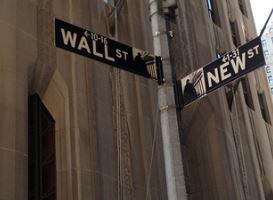The wild swings on wall street and other now interconnected bourses in today’s global casino have seen billions withdrawn by small investors. Their instincts are correct. Today’s markets are becoming too erratic and volatile for investors – driven by frantic speed trading and speculators. The usual bromides from market pundits blame China, oil prices, the Fed, slowing global GDP-measured economic growth. Very few have the courage to point to the fundamental problems:
- The basic structure of securities markets has transformed into fifty or more “unlit” electronic platforms all seeking trading volume by paying kickbacks to broker-dealers for their order flow.
- This new “maker-taker” model leads to a “race-to-the-bottom” of most FINRA members who must now compete with those who take these kickbacks and so can lower their execution fees. So others follow suit in order to match these reduced fees.
- The markets are now dominated by computers and algorithms which now make over 50% of all trades daily.
 Few of these algorithms are regularly monitored to see if their programmed assumptions still apply. This leads to loss of transparency, mispricing, as occurred with several ETFs affected by different market speeds so fell much lower than the price declines in their underlying assets.
Few of these algorithms are regularly monitored to see if their programmed assumptions still apply. This leads to loss of transparency, mispricing, as occurred with several ETFs affected by different market speeds so fell much lower than the price declines in their underlying assets. - Markets are now dominated by high frequency trading (HFT) and these firms make money on upswings and downswings, profiting from the volatility that the very speed of their trades creates.
- Pension funds and all investors are affected by hft firms competing on latency (speed) and co-location (siting their servers closest to the big servers of the nyse in Mahwah, NJ, or those of nasdaq in Carteret, NJ, which charge hefty fees for the closest locations). This allows hft firms to see all slower orders than theirs before they arrive in any of these markets or the other “unlit” dark pools and electronic platforms, many owned by big banks including Goldman Sachs, Barclay’s and others. There is little regulation, no electronic ticker tape and HFT was the main cause of the May 10, 2010, “flash crash”. What we have been witnessing in markets recently is daily “flash crashes” where markets tumble as algorithms, circuit breakers and stop-loss programs kick in, and the next day markets recover as these same algorithms signal buying price levels. All this automated activity amplifies swings caused by actual investors reacting to news.
- All this has been documented by concerned market players including Sal Arnuk and Joe Saluzzi in Broken Markets (2012); Scott Patterson in Dark Pools (2012); Michael Lewis in Flash Boys (2013) and have led to some market-based reforms including IEX (a plain vanilla, transparent platform mostly for investors) and a new standard, BestEx, a seal of Healthy Markets’ approval for broker-dealers who pledge not to steer their orders to market platforms for kickbacks. Hearings in the Senate in 2013 debated banning these practices. Bills calling for below 1% financial transactions taxes (FTT) favored by many experts like Larry Summers are fiercely opposed but enacted in many countries (www.citizensforethics.org).
The good news is that small investors are bypassing these broken wall street markets and ethical investors are zeroing in on these new deeper structural problems, recognizing that basic market plumbing is broken. Reforms must overcome the $10 million HFT firms have spent since 2008 lobbying Congress and the SEC. A promising new reform effort JUSTCapital will be launching on September 24, 2015, in New York in time for the Pope’s visit and the release of the UN’s Inquiry into the Design of a Sustainable Financial System.
Meanwhile, small investors and savers are doing better in homegrown markets, local companies they know, crowdfunding, peer-to-peer lenders and cooperative firms, credit unions and all the swap and barter sites, farmer’s markets, municipal-owned wind generators and solar farms, all documented at ILSR.org and in Locavesting (2011).
If Wall Street cannot reform its bizarre, fragile structure, computers might actually prove better than greedy, short-term proprietary traders, speculators, front-runners and inside traders that have corrupted these markets as I document in “Reforming Electronic Markets and Trading”. Transparent computer black box servers can match buyers and sellers, savers and borrowers more efficiently than humans – and this digitization trend in our post-industrial economies has now arrived on Wall Street. Stay tuned.
hazel henderson © 2015 for Justmeans
